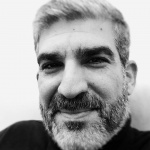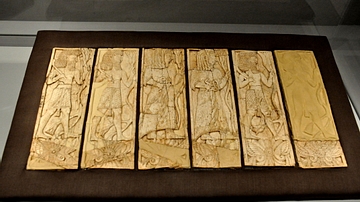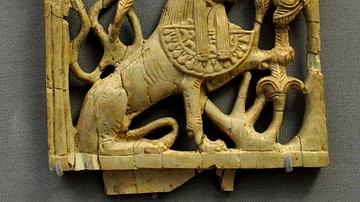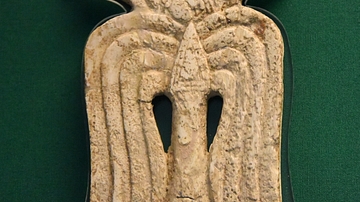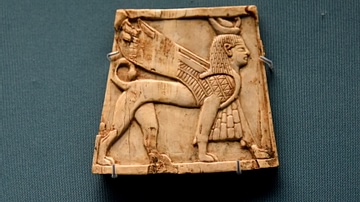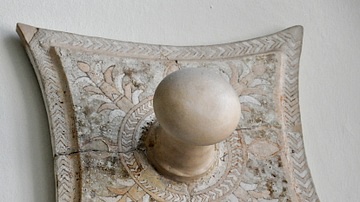Illustration
A winged human-headed sphinx wears the double crown of Egypt. An apron hangs down on the chest with a projecting uraeus (rearing cobra) similar to those worn by Egyptian pharaohs. A striking Phoenician style. Excavated by Sir Max Mallowan. Purchased from the British School of Archeology in Iraq; acquisition date 1961. Neo-Assyrian Period, 9th to 8th centuries BCE. From Fort Shalmaneser at Nimrud (ancient Kalhu), Mesopotamia, modern-day Iraq. (The British Museum, London).
About the Author
Cite This Work
APA Style
Amin, O. S. M. (2016, September 10). Nimrud Ivory Plaque of an Egyptian Sphinx. World History Encyclopedia. Retrieved from https://www.worldhistory.org/image/5648/nimrud-ivory-plaque-of-an-egyptian-sphinx/
Chicago Style
Amin, Osama Shukir Muhammed. "Nimrud Ivory Plaque of an Egyptian Sphinx." World History Encyclopedia. Last modified September 10, 2016. https://www.worldhistory.org/image/5648/nimrud-ivory-plaque-of-an-egyptian-sphinx/.
MLA Style
Amin, Osama Shukir Muhammed. "Nimrud Ivory Plaque of an Egyptian Sphinx." World History Encyclopedia. World History Encyclopedia, 10 Sep 2016. Web. 15 Apr 2025.


